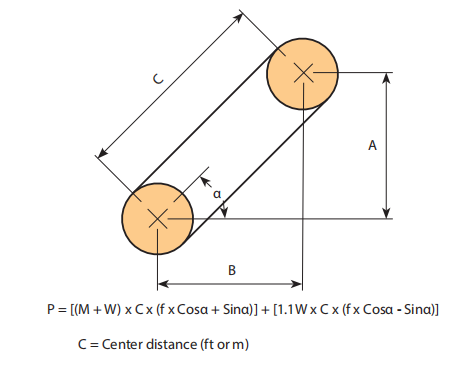Introduction
A careful assessment on the circumstances surrounding a conveyor is necessary for accurate conveyor chain selection. This area discusses the essential concerns essential for thriving conveyor chain choice. Roller Chains are sometimes utilized for light to reasonable duty material handling applications. Environmental conditions could need using specific elements, platings coatings, lubricants or even the skill to operate without further external lubrication.
Simple Facts Expected For Chain Selection
? Type of chain conveyor (unit or bulk) which includes the method of conveyance (attachments, buckets, by way of rods and so forth).
? Conveyor layout like sprocket spots, inclines (if any) and the number of chain strands (N) to be utilised.
? Amount of materials (M in lbs/ft or kN/m) and form of materials for being conveyed.
? Estimated excess weight of conveyor components (W in lbs/ft or kN/m) which includes chain, slats or attachments (if any).
? Linear chain velocity (S in ft/min or m/min).
? Environment by which the chain will operate including temperature, corrosion circumstance, lubrication problem and so on.
Stage 1: Estimate Chain Stress
Make use of the formula below to estimate the conveyor Pull (Pest) then the chain stress (Test). Pest = (M + W) x f x SF and
Check = Pest / N
f = Coefficient of Friction
SF = Pace Element
Phase two: Create a Tentative Chain Variety
Making use of the Test worth, make a tentative choice by deciding on a chain
whose rated working load higher than the calculated Test worth.These values are acceptable for conveyor services and are diff erent from people proven in tables at the front on the catalog which are related to slow speed drive chain usage.
Furthermore to suffi cient load carrying capability often these chains must be of a specified pitch to accommodate a preferred attachment spacing. Such as if slats are to become bolted to an attachment every single 1.5 inches, the pitch from the chain selected ought to divide into one.5?¡À. So one particular could use a forty chain (1/2?¡À pitch) with all the attachments each and every 3rd, a 60 chain (3/4?¡À pitch) with all the attachments each 2nd, a 120 chain (1-1/2?¡À pitch) using the attachments each and every pitch or possibly a C2060H chain (1-1/2?¡À pitch) together with the attachments just about every pitch.
Phase 3: Finalize Variety – Calculate Actual Conveyor Pull
Immediately after generating a tentative selection we have to confirm it by calculating
the actual chain tension (T). To perform this we will have to fi rst determine the actual conveyor pull (P). Through the layouts shown within the ideal  side of this web page pick out the proper formula and determine the total conveyor pull. Note that some conveyors can be a blend of horizontal, inclined and vertical . . . in that situation calculate the conveyor Pull at each area and include them with each other.
side of this web page pick out the proper formula and determine the total conveyor pull. Note that some conveyors can be a blend of horizontal, inclined and vertical . . . in that situation calculate the conveyor Pull at each area and include them with each other.
Step 4: Calculate Highest Chain Tension
The maximum Chain Tension (T) equals the Conveyor Pull (P) as calculated in Stage three divided through the quantity of strands carrying the load (N), times the Velocity Aspect (SF) shown in Table two, the Multi-Strand Aspect (MSF) shown in Table 3 and also the Temperature Factor (TF) shown in Table four.
T = (P / N) x MSF x SF x TF
Phase five: Examine the ?¡ãRated Doing work Load?¡À with the Selected Chain
The ?¡ãRated Working Load?¡À from the selected chain need to be better compared to the Optimum Chain Tension (T) calculated in Step 4 above. These values are appropriate for conveyor services and are diff erent from people shown in tables on the front with the catalog which are associated with slow pace drive chain usage.
Stage 6: Check out the ?¡ãAllowable Roller Load?¡À of your Chosen Chain
For chains that roll over the chain rollers or on leading roller attachments it is required to check the Allowable Roller Load?¡À.
Note: the Roller load is established by:
Roller Load = Wr / Nr
Wr = The total excess weight carried from the rollers
Nr = The amount of rollers supporting the bodyweight.
Conveyor Chain Choice
Tags:
